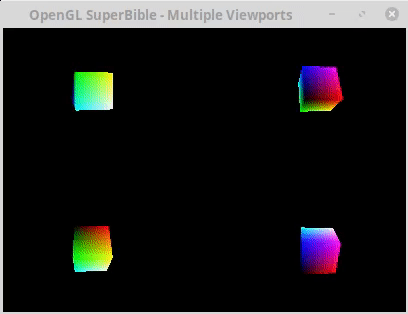Рисунок 8.27 Superbible OpenGL 7-е изд. был портирован на python, но у меня снова возникает ошибка с glMapBufferRange. На этот раз для выделения glm.mat4 я попытался преобразовать его в нативный ctypes.sizeof (ctypes.c_float) * 16, но безрезультатно. Пожалуйста помоги. Спасибо.
Обновление: отличный ответ предоставлен Rabbid76. Я смог решить проблему, и теперь программа отображает 4 вращающихся кубика. Большое спасибо!
ожидаемый результат:

Токовый выход: ошибка 1282, glMapBufferRange, недопустимая операция
Файл поддержки: multiviewport_support.zip
Исходный код:
#!/usr/bin/python3
import sys
import time
import ctypes
fullscreen = True
sys.path.append("./shared")
from sbmloader import SBMObject # location of sbm file format loader
from ktxloader import KTXObject # location of ktx file format loader
from textoverlay import OVERLAY_
from shader import shader_load, link_from_shaders
from sbmath import m3dDegToRad, m3dRadToDeg, m3dTranslateMatrix44, m3dRotationMatrix44, \
m3dMultiply, m3dOrtho, m3dPerspective, rotation_matrix, translate, m3dScaleMatrix44, \
scale, m3dLookAt, normalize
try:
from OpenGL.GLUT import *
from OpenGL.GL import *
from OpenGL.GLU import *
from OpenGL.raw.GL.ARB.vertex_array_object import glGenVertexArrays, glBindVertexArray
except:
print ('''
ERROR: PyOpenGL not installed properly.
''')
sys.exit()
import numpy as np
from math import cos, sin
import glm
identityMatrix = [1,0,0,0, 0,1,0,0, 0,0,1,0, 0,0,0,1]
myobject = SBMObject()
ktxobject = KTXObject()
overlay = OVERLAY_()
program = GLuint(0)
vao = GLuint(0)
position_buffer = GLuint(0)
index_buffer = GLuint(0)
uniform_buffer = GLuint(0)
mv_location = GLint(0)
proj_location = GLint(0)
class Scene:
def __init__(self, width, height):
global program
global vao
global position_buffer
global index_buffer
global uniform_buffer
vs_source = '''
#version 420 core
in vec4 position;
out VS_OUT
{
vec4 color;
} vs_out;
void main(void)
{
gl_Position = position;
vs_out.color = position * 2.0 + vec4(0.5, 0.5, 0.5, 0.0);
}
'''
gs_source = '''
#version 420 core
layout (triangles, invocations = 4) in;
layout (triangle_strip, max_vertices = 3) out;
layout (std140, binding = 0) uniform transform_block
{
mat4 mvp_matrix[4];
};
in VS_OUT
{
vec4 color;
} gs_in[];
out GS_OUT
{
vec4 color;
} gs_out;
void main(void)
{
for (int i = 0; i < gl_in.length(); i++)
{
gs_out.color = gs_in[i].color;
gl_Position = mvp_matrix[gl_InvocationID] *
gl_in[i].gl_Position;
gl_ViewportIndex = gl_InvocationID;
EmitVertex();
}
EndPrimitive();
}
'''
fs_source = '''
#version 420 core
out vec4 color;
in GS_OUT
{
vec4 color;
} fs_in;
void main(void)
{
color = fs_in.color;
}
'''
program = glCreateProgram()
vs = glCreateShader(GL_VERTEX_SHADER)
glShaderSource(vs, vs_source)
glCompileShader(vs)
gs = glCreateShader(GL_GEOMETRY_SHADER)
glShaderSource(gs, gs_source)
glCompileShader(gs)
fs = glCreateShader(GL_FRAGMENT_SHADER)
glShaderSource(fs, fs_source)
glCompileShader(fs)
glAttachShader(program, vs)
glAttachShader(program, gs)
glAttachShader(program, fs)
glLinkProgram(program)
glGenVertexArrays(1, vao)
glBindVertexArray(vao)
vertex_indices = np.array([
0, 1, 2,
2, 1, 3,
2, 3, 4,
4, 3, 5,
4, 5, 6,
6, 5, 7,
6, 7, 0,
0, 7, 1,
6, 0, 2,
2, 4, 6,
7, 5, 3,
7, 3, 1
], dtype=np.uint16) # GLushort
vertex_positions = np.array([
-0.25, -0.25, -0.25,
-0.25, 0.25, -0.25,
0.25, -0.25, -0.25,
0.25, 0.25, -0.25,
0.25, -0.25, 0.25,
0.25, 0.25, 0.25,
-0.25, -0.25, 0.25,
-0.25, 0.25, 0.25,
], dtype=np.float32) # GLfloat
size_vertex_indices = ctypes.sizeof(ctypes.c_ushort)*len(vertex_indices)
size_vertex_positions = ctypes.sizeof(ctypes.c_float)*len(vertex_positions)
glGenBuffers(1, position_buffer)
glBindBuffer(GL_ARRAY_BUFFER, position_buffer)
glBufferData(GL_ARRAY_BUFFER,
size_vertex_positions,
vertex_positions,
GL_STATIC_DRAW)
glVertexAttribPointer(0, 3, GL_FLOAT, GL_FALSE, 0, None)
glEnableVertexAttribArray(0)
glGenBuffers(1, index_buffer)
glBindBuffer(GL_ELEMENT_ARRAY_BUFFER, index_buffer)
glBufferData(GL_ELEMENT_ARRAY_BUFFER,
size_vertex_indices,
vertex_indices,
GL_STATIC_DRAW)
glGenBuffers(1, uniform_buffer)
glBindBuffer(GL_UNIFORM_BUFFER, uniform_buffer)
glBufferData(GL_UNIFORM_BUFFER, 4 * glm.sizeof(glm.mat4()), None, GL_DYNAMIC_DRAW)
glEnable(GL_CULL_FACE)
#// glFrontFace(GL_CW)
glEnable(GL_DEPTH_TEST)
glDepthFunc(GL_LEQUAL)
def display(self):
currentTime = time.time()
i=0
black = [ 0.0, 0.0, 0.0, 1.0 ]
one = 1.0
glViewport(0, 0, self.width, self.height)
glClearBufferfv(GL_COLOR, 0, black)
glClearBufferfv(GL_DEPTH, 0, one)
# // Each rectangle will be 7/16 of the screen
viewport_width = (7 * self.width) / 16.0
viewport_height = (7 * self.height) / 16.0
# // Four rectangles - lower left first...
glViewportIndexedf(0, 0, 0, viewport_width, viewport_height);
# // Lower right...
glViewportIndexedf(1,
self.width - viewport_width, 0,
viewport_width, viewport_height);
# // Upper left...
glViewportIndexedf(2,
0, self.height - viewport_height,
viewport_width, viewport_height);
# // Upper right...
glViewportIndexedf(3,
self.width - viewport_width,
self.height - viewport_height,
viewport_width, viewport_height);
proj_matrix = (GLfloat * 16)(*identityMatrix)
proj_matrix = m3dPerspective(m3dDegToRad(50.0), float(self.width) / float(self.height), .1, 1000.0)
f = currentTime * 0.3;
glBindBufferBase(GL_UNIFORM_BUFFER, 0, uniform_buffer)
mv_matrix_array = glMapBufferRange(GL_UNIFORM_BUFFER,
0,
4 * glm.sizeof(glm.mat4()),
GL_MAP_WRITE_BIT | GL_MAP_INVALIDATE_BUFFER_BIT)
mv_matrix_array_p = (GLfloat * 16 * 4).from_address(mv_matrix_array)
for i in range(0, 4):
T = (GLfloat * 16)(*identityMatrix)
m3dTranslateMatrix44(T, 0.0, 0.0, -2.0)
RY = (GLfloat * 16)(*identityMatrix)
m3dRotationMatrix44(RY, currentTime * m3dDegToRad(17.0)*(i+1), 0.0, 1.0, 0.0)
RX = (GLfloat * 16)(*identityMatrix)
m3dRotationMatrix44(RX, currentTime * m3dDegToRad(10.0)*(i+1), 1.0, 0.0, 0.0)
mv_matrix = (GLfloat * 16)(*identityMatrix)
mv_matrix = m3dMultiply(T, m3dMultiply(RY, RX))
mvp_matrix = m3dMultiply(proj_matrix , mv_matrix)
mv_matrix_array_p[i][:] = mvp_matrix
glUnmapBuffer(GL_UNIFORM_BUFFER)
glUseProgram(program)
glDrawElements(GL_TRIANGLES, 36, GL_UNSIGNED_SHORT, 0)
glutSwapBuffers()
def reshape(self, width, height):
self.width = width
self.height = height
def keyboard(self, key, x, y ):
global fullscreen
print ('key:' , key)
if key == b'\x1b': # ESC
sys.exit()
elif key == b'f' or key == b'F': #fullscreen toggle
if (fullscreen == True):
glutReshapeWindow(512, 512)
glutPositionWindow(int((1360/2)-(512/2)), int((768/2)-(512/2)))
fullscreen = False
else:
glutFullScreen()
fullscreen = True
def init(self):
pass
def timer(self, blah):
glutPostRedisplay()
glutTimerFunc( int(1/60), self.timer, 0)
time.sleep(1/60.0)
if __name__ == '__main__':
glutInit()
glutInitDisplayMode(GLUT_RGBA | GLUT_DOUBLE | GLUT_DEPTH)
glutInitWindowSize(512, 512)
w1 = glutCreateWindow('OpenGL SuperBible - Multiple Viewports')
glutInitWindowPosition(int((1360/2)-(512/2)), int((768/2)-(512/2)))
fullscreen = False
#glutFullScreen()
scene = Scene(512,512)
glutReshapeFunc(scene.reshape)
glutDisplayFunc(scene.display)
glutKeyboardFunc(scene.keyboard)
glutIdleFunc(scene.display)
#glutTimerFunc( int(1/60), scene.timer, 0)
scene.init()
glutMainLoop()
перенесено с: multiviewport.cpp